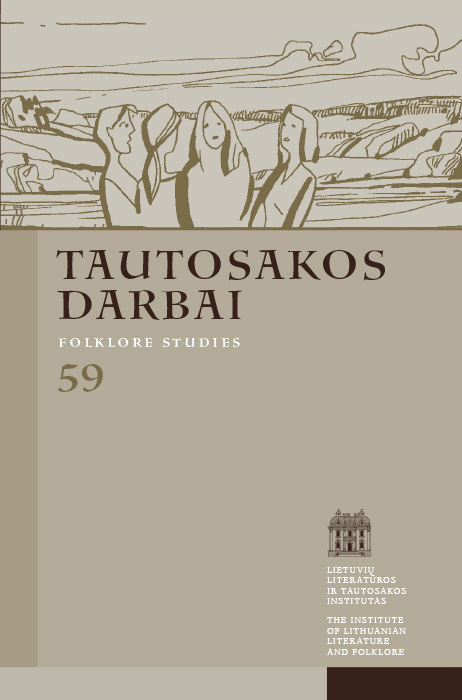Dvikalbių dainų samprata Slovėnijoje ir kultūriniai kalbos pasirinkimo aspektai
Santrauka
Slovėnijoje, kuri iki 1918 m. priklausė Habsburgų imperijai, tautų kaip kolektyvinių individų lygybės idėja, tapusi liaudies dainų rinkimo pagrindu, visą laiką buvo itin aktuali. Liaudies dainų rinkimas buvo laikomas viena svarbiausių ir ryškiausių tautos saviraiškos galimybių; negana to, šiam tikslui surinktas dainas reikėjo apvalyti nuo valdančiojo elito kalbos. Dainų transkripcija leido jas perkelti iš vienos etninės grupės kitai, makaroninių dainų dėl tų pačių priežasčių pasitaikydavo labai retai, o jų užrašymai jau savaime kelia įvairių klausimų.
Siekiant išryškinti aplinkybes, kuriomis buvo kuriamos dvikalbės dainos, straipsnyje nagrinėjama poros dainų, kurias XIX a. pirmojoje pusėje užrašė Stanko Vrazas, vienas iš pirmųjų slovėnų liaudies dainų rinkėjų ir tyrėjų, vaidmenų kaita ir santykis su makaroninėmis dainomis. Ši kaita matyti tiek folkloristikos kaip mokslo sampratoje, tiek liaudies dainų užrašymuose, kuriuos folkloristai siekė reguliuoti. Struktūros ir kalbos požiūriu nugludinta vokiška slovėnų daina „Seid fröhlich ihr Brüder” (‘Būkit laimingi, broliai’) pirmąsyk buvo fiksuota mokytojų socialiniame rate ir vėliau randama itin retai. Tuo tarpu pirmieji žinomi dainos “Kam bova vandrala, vandrovček moj” (‘Kur mes keliausim, mano keliauninke’) šaltiniai yra tik slovėnų kalba, neišskiriant nė S. Vrazo užrašymo, o vokiška šios slovėnų dainos versija aptinkama jau tik XX a. užrašymuose. Beje, ši daina daugiausia buvo fiksuojama kaimiškose vietovėse.
Dvikalbės dainos tik iš dalies atitiko liaudies dainų rinkėjų puoselėtus ideologinius principus. Išanalizavus minėtąsias dvi dainas, straipsnyje keliamas klausimas, ar neigiamas požiūris
į makaronines dainas veikė ir keitė tiktai jų rinkimą ar paveikė ir pačias dainas. Antroji daina, kurios dvikalbis pavidalas pasirodė tiktai XX a., perša dvi galimybes: arba folkloristai negalėjo ir nenorėjo matyti šios dainos dvikalbystės, arba dvikalbės dainų versijos buvo kuriamos paprastų žmonių, nepaisant akivaizdžiai neigiamo folkloristų požiūrio į tokias dainas. Norėdami susidaryti aiškesnį vaizdą, turėtume sutelkti daugiau užrašytos medžiagos, daugiau duomenų ir platesnį kontekstą, kuris apimtų ir užsienyje gyvenančias slovėnų mažumas. Todėl straipsnyje, aptariant dvikalbes dainas, ypač pabrėžiama platesnio lyginamojo tyrimo būtinybė, o toks tyrimas neįmanomas be tarptautinio mokslinio bendradarbiavimo.
